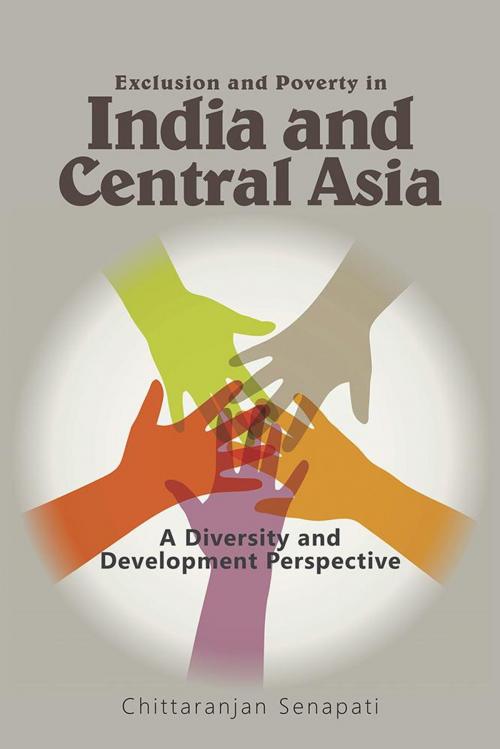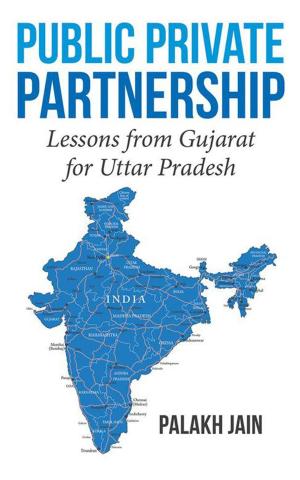Exclusion and Poverty in India and Central Asia
A Diversity and Development Perspective
Nonfiction, Social & Cultural Studies, Social Science| Author: | Chittaranjan Senapati | ISBN: | 9781482885200 |
| Publisher: | Partridge Publishing India | Publication: | September 9, 2016 |
| Imprint: | Partridge Publishing India | Language: | English |
| Author: | Chittaranjan Senapati |
| ISBN: | 9781482885200 |
| Publisher: | Partridge Publishing India |
| Publication: | September 9, 2016 |
| Imprint: | Partridge Publishing India |
| Language: | English |
The early years of 1990s economic reform and change has neglected social sectors both in India and Central Asia. As a result, poverty has also increased in India and Central Asian countries. The economic, political, and social situation has worsened in all Central Asian states due to transition from command economy to market economy. The early 1990s political decision has been dominated by a narrowly conceived version of economic policy for both India and Central Asia. As a result, the quality and the structure of social protection changed in a negative way. Indeed, in some cases, the pursuit of a strict economic orthodoxy has left various sections of the community marginalized and alienated. Both the societies confront a number of challenges that is as profound as the economic changes of the past. The process of globalization and technical change has influenced economy and society in complex ways, including raising expectations of consumption and remuneration for skilled knowledge workers, creating greater demand for some information skills and services, causing unemployment amongst those with few qualifications, and destabilizing some traditional ways of life and increasing social exclusion. It detaches groups and individuals from social relations and institutions and prevents them from full participation in the normal activities of the society. In India and Central Asia, communities face social exclusion on the basis of their identity as ethnic groups, socio-economic groups, religious community, and gender. Inclusive development, therefore, is essential, and it should be the top priority in development programs of India and Central Asia. Research in this area has not been touched upon so far. Since Central Asian countries are relatively new and trying to establish their democratic institutions, this piece of work will be helpful for their nation-building processes. So far as the mutual benefit for both the regions is concerned, India is an old democracy, and its inclusive policy can be lessons for Central Asian countries. On the other hand, the experience of Central Asias policy implementation can be a lesson for India. This piece of work has potential impulses to policy makers, academicians, and researchers of these five Central Asian countries and India. This work can make a distinction than the conventional researcher in India by focusing on development studies, social exclusion, inclusive policies, and comparative studies in international developments. Key words: social exclusion, poverty, deprivation, development, diversity, India, Central Asia, Kazakhstan, Kyrgyzstan, Tajikistan, Turkmenistan, and Uzbekistan
The early years of 1990s economic reform and change has neglected social sectors both in India and Central Asia. As a result, poverty has also increased in India and Central Asian countries. The economic, political, and social situation has worsened in all Central Asian states due to transition from command economy to market economy. The early 1990s political decision has been dominated by a narrowly conceived version of economic policy for both India and Central Asia. As a result, the quality and the structure of social protection changed in a negative way. Indeed, in some cases, the pursuit of a strict economic orthodoxy has left various sections of the community marginalized and alienated. Both the societies confront a number of challenges that is as profound as the economic changes of the past. The process of globalization and technical change has influenced economy and society in complex ways, including raising expectations of consumption and remuneration for skilled knowledge workers, creating greater demand for some information skills and services, causing unemployment amongst those with few qualifications, and destabilizing some traditional ways of life and increasing social exclusion. It detaches groups and individuals from social relations and institutions and prevents them from full participation in the normal activities of the society. In India and Central Asia, communities face social exclusion on the basis of their identity as ethnic groups, socio-economic groups, religious community, and gender. Inclusive development, therefore, is essential, and it should be the top priority in development programs of India and Central Asia. Research in this area has not been touched upon so far. Since Central Asian countries are relatively new and trying to establish their democratic institutions, this piece of work will be helpful for their nation-building processes. So far as the mutual benefit for both the regions is concerned, India is an old democracy, and its inclusive policy can be lessons for Central Asian countries. On the other hand, the experience of Central Asias policy implementation can be a lesson for India. This piece of work has potential impulses to policy makers, academicians, and researchers of these five Central Asian countries and India. This work can make a distinction than the conventional researcher in India by focusing on development studies, social exclusion, inclusive policies, and comparative studies in international developments. Key words: social exclusion, poverty, deprivation, development, diversity, India, Central Asia, Kazakhstan, Kyrgyzstan, Tajikistan, Turkmenistan, and Uzbekistan















